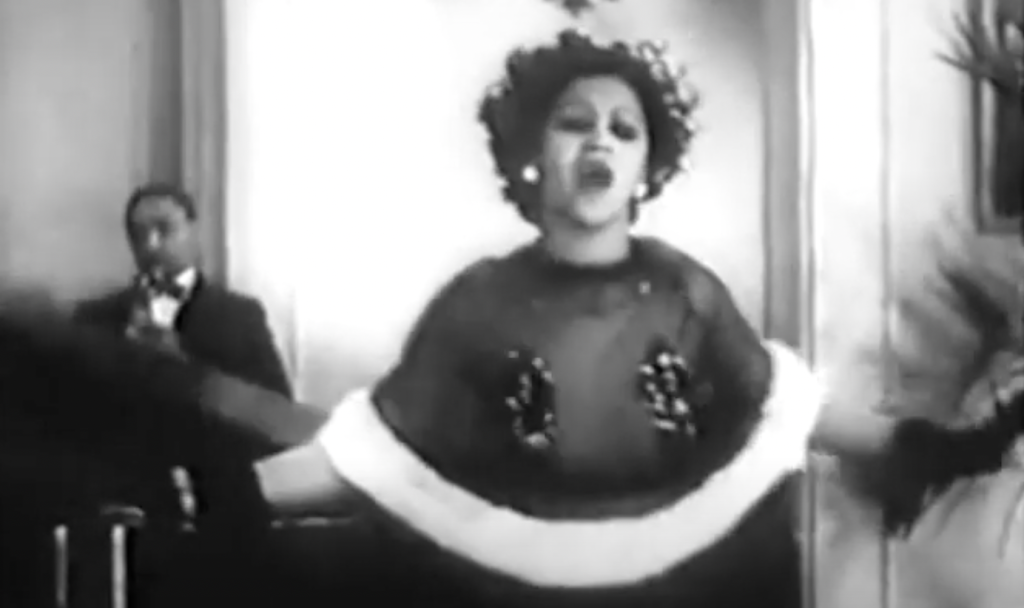OTD in early British television: 8 January 1937

John Wyver writes: on the afternoon of Friday 8 January 1937 Dallas Bower produced Burnt Sepia, a half-hour variety line-up billed as, in the racially derogatory language of the day, ‘an all-coloured cabaret’. This was television’s first variety programme featuring exclusively Black artists, and was headlined by American singer and dancer Eunice Wilson, who can be seen in this 1935 video, a screengrab of which is the image above.
Others on the Burnt Sepia bill were boogie-woogie and stride pianist Garland Wilson, the Cole Brothers, and Trinidadian trumpeter Cyril Blake as well as the eight ‘Sepia Chorines’, choreographed by celebrated dancer Buddy Bradley.
An African-American dancer and choroegrapher, Bradley settled in England in 1933, where he worked on many West End shows; see this blog entry by ‘The lifelong dance student’. According to Wikipedia, he was the first Black dancer to choreograph an all-white show in London, and he often collaborated with the noted ballet dancer and choreographer Andrée Howard, who also worked frequently on television productions. Among much else, Bradley was the dance arranger on the Jessie Matthews musical Evergreen (1934), including for this number:
Broadcasts featuring only Black artists were an irregular but notable feature of the Alexandra Palace schedules, with exoticising titles like Ebony, Dark Laughter, Coloured Cabaret and Dark Highlights. The majority were produced by Dallas Bower, and they showcased an extensive range of African-American and Caribbean musicians, singers and dancers.
Others who appeared in similar television line-ups included the glorious Nina Mae McKinney, Jamaican jazz trumpeter and trombonist Leslie Thompson; tap dancer Johnny Nit; pianist York de Souza (wrongly credited in Radio Times as ‘de Sousa’), also from Jamaica; and the band led by West Indian saxophonist and clarinettist Joe Appleton.
Trading on the cosmopolitan sophistication associated with entertainment in Harlem, these broadcasts echoed West End shows such as Charles Cochran’s Dover Street to Dixie (1923), the second half of which showcased Black artists, and the Blackbirds series of all-Black revues that began in London in 1926.
Opportunities for noted Black performers were in part a consequence of the difficulties AP producers faced, thanks to the animosity of their agents towards television, in booking many British singers and musicians, but they were also highly valued for their musicianship.
In his important book Paving the Empire Road: BBC Television and Black Britons (2011), historian Darrell Newton, drawing in part of singer Elizabeth Welch’s recollections of being before the cameras, suggested that the low definition images of early television rendered Black artists as visually white and so, in the case of Welch at least, ‘evacuated [her] of racial coding.’
‘The visual coding of race on early monochromatic broadcasts was unapparent,’ Newton suggested, and proposed that the singer ‘found her image as a Black woman altered and eradicated by the very nature of the medium and its technical limitations.’
This was almost certainly the case with 30-line broadcasts, but it is not clear that the far more sensitive Emitrons could not accurately transmit a range of skin tones. Moreover, the presentation of Burnt Sepia and similar shows suggests an explicit embrace of Black artistry, albeit most certainly a limited one.
Dallas Bower is a sadly forgotten figure. His 1934 book, Plan for Cinema, was far ahead of its time. And as well as his pioneering work in television, celebrated here, he also encouraged Olivier to make HENRY V – partinspired by Eisenstein’s NEVSKY, which Bower showed to TV cameramen as part of their training. I tracked him down, living near BH, and interviewed him for a R3 doc, The Eisenstein Enigma.
That’s fascinating, Ian – I would have loved to have met Bower, although a substitute is the interview recorded with the British Entertainment Oral Hisotryy Archive. He’s a key character in my book, and I wrote about him earlier in this article for Jounral of British Cinema and Television:
https://westminsterresearch.westminster.ac.uk/item/q2xy7/dallas-bower-a-producer-for-television-s-early-years-1936-39